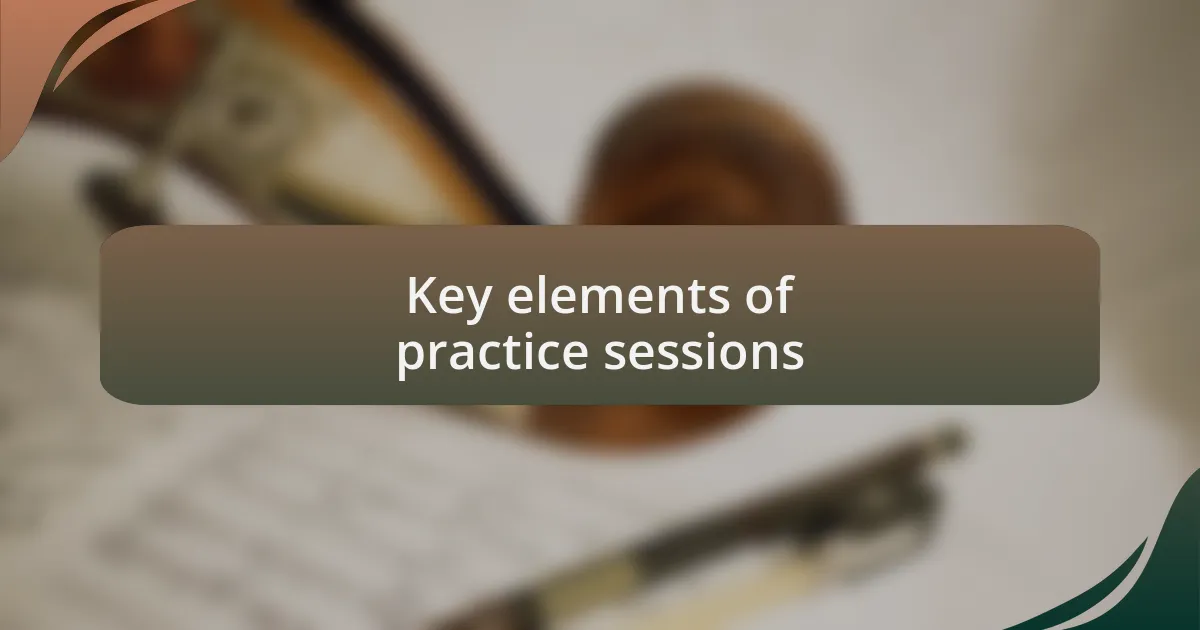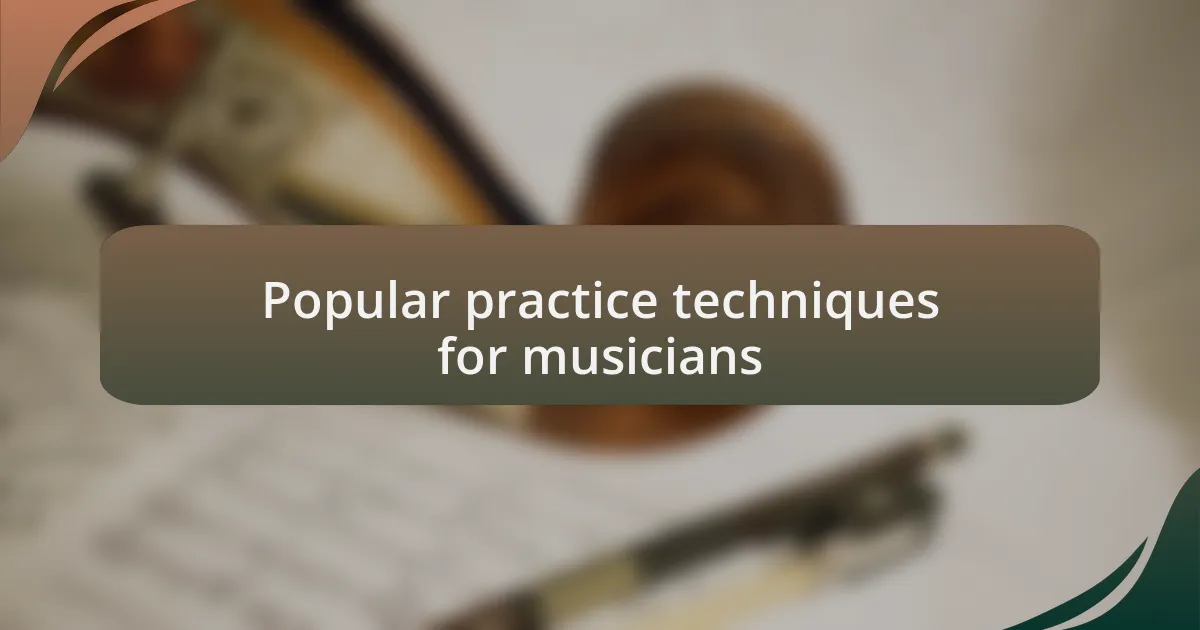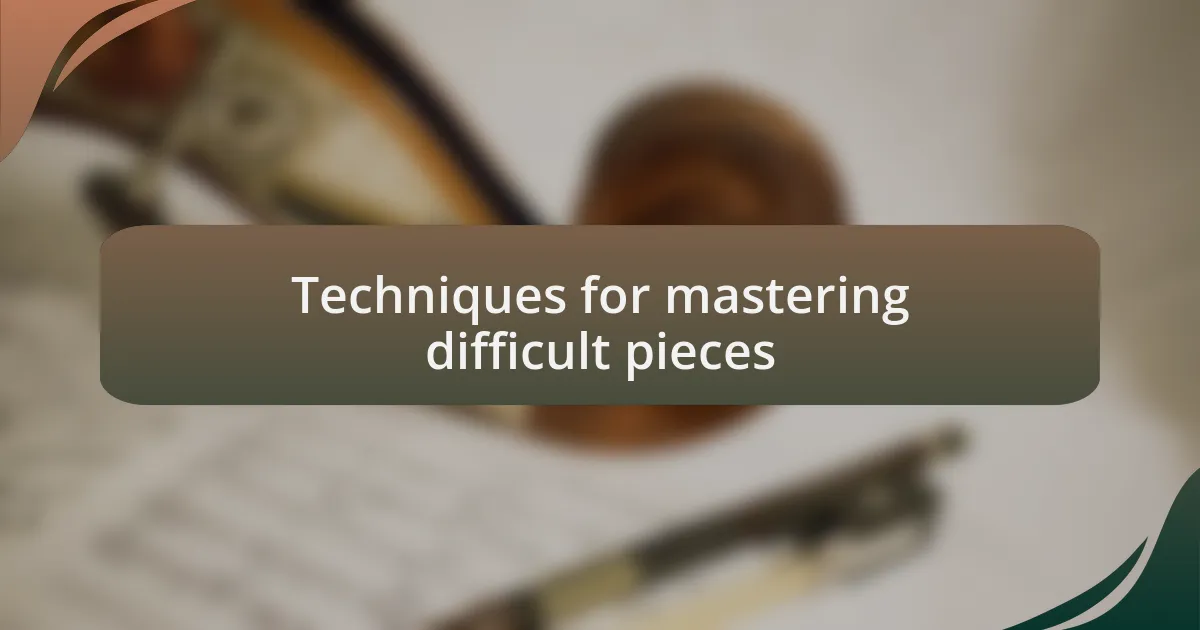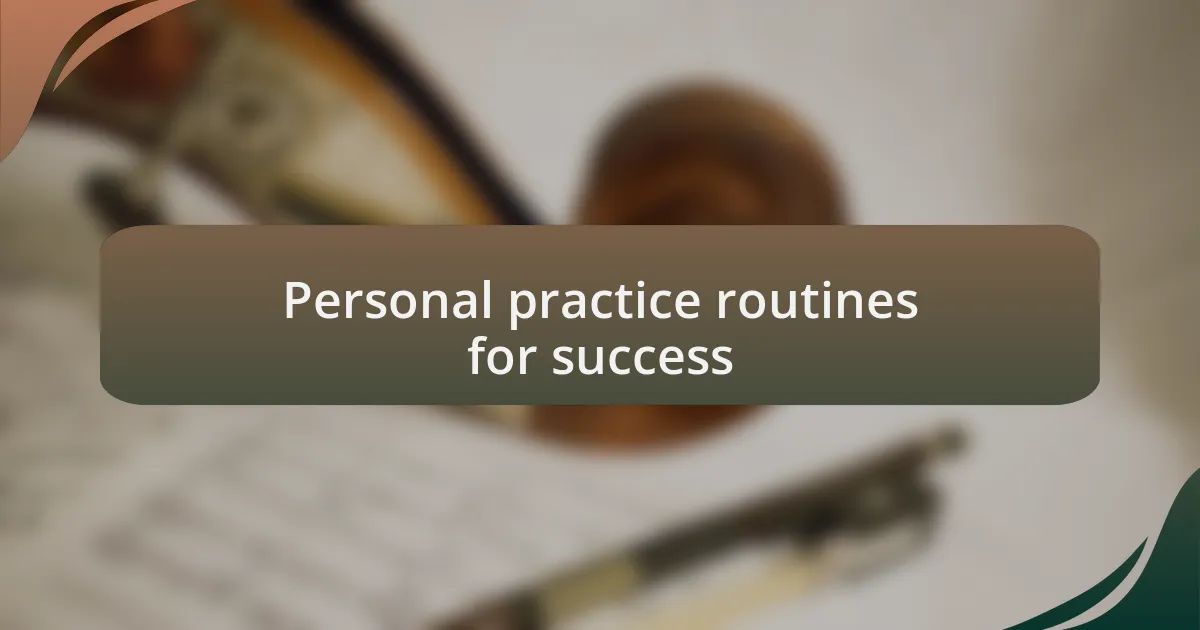Key takeaways:
- Deliberate practice and visualization are essential techniques that enhance skill mastery and creativity.
- Effective practice involves consistency, emotional engagement, and intentionality to transform the musician’s journey.
- Incorporating variety, reflection, and guided routines into practice sessions enhances learning and motivation.
- Breaking down difficult pieces, practicing slowly, and utilizing a metronome are vital strategies for mastering challenging music.

Introduction to practice techniques
Practice techniques are the backbone of any musician’s journey, offering structured ways to improve skills and enhance creativity. I remember my early days with the guitar, sitting on my bedroom floor and wondering how to get through those tough chords. It seemed overwhelming at first, but discovering targeted techniques turned a daunting task into a manageable and even enjoyable process.
One powerful approach I found helpful is the use of deliberate practice. Instead of simply playing through a song, I break it down into sections. This targeted focus not only builds my confidence but helps me master each part before piecing it all together. Have you ever tried honing in on just a few measures of a piece? It can be a game-changer.
Another technique that has always resonated with me is visualization. When I close my eyes and imagine myself performing pieces flawlessly, I can almost feel the music flowing through me. It creates a connection between my mind and instrument that transcends the physical act of playing. This mental rehearsal can be just as potent as the actual practice, making the music come alive.

Importance of effective practice
Effective practice can truly transform a musician’s experience, taking it from routine to rewarding. I vividly recall a time when I struggled with a particular piece that felt impossible to play. By dedicating small, focused sessions to it, I discovered a rhythm that not only eased my frustration but made the process enjoyable. Isn’t it fascinating how a well-structured practice session can alleviate stress while paving the way for mastery?
Moreover, I’ve learned that maintaining consistency in practice is vital for growth. There were weeks where my schedule was chaotic, and I’d skip sessions, thinking I could catch up later. However, I soon realized that missing those daily moments hurt my progress. Have you ever experienced that sense of loss when you step away from your instrument? It’s a reminder that regular engagement is key to unlocking our musical potential.
Last but not least, the emotional journey through effective practice can be incredibly rewarding. I still remember the thrill of hitting that perfect note after countless attempts. It wasn’t just a victory over a technical challenge; it became a source of motivation that fueled my passion further. How often do we underestimate the emotional highs that come from dedicating ourselves fully to our craft? Those moments create lasting memories that keep us coming back for more.

Key elements of practice sessions
When I think about the key elements of practice sessions, one component stands out: intentionality. Each time I sit down with my instrument, I set specific goals—whether it’s mastering a challenging passage or perfecting my vibrato. This clarity not only keeps me focused but transforms each practice session into a journey with a destination. Have you ever felt the satisfaction of hitting a target? It’s a remarkable feeling that enhances your growth.
Another pivotal aspect is the balance between repetition and variation. I recall a time when I memorized a piece by obsessively playing the same section over and over, only to find that my enthusiasm waned. It was then I realized that mixing scales, arpeggios, or even experimenting with different interpretations could breathe new life into my practice. How much more vibrant does your practice feel when you shake things up a bit? This variety not only sharpens technical skills but also keeps the experience enjoyable and engaging.
Lastly, incorporating reflection into my practice sessions has proven invaluable. I make it a habit to record myself after every few sessions. Listening back allows me to identify areas for improvement and celebrate the progress I’ve made. Can you imagine how enlightening it is to hear your own growth? Those moments of reflection turn what might seem like simple repetitions into insightful learning experiences, making each session richer and more fulfilling.

Popular practice techniques for musicians
One highly effective practice technique I swear by is the use of guided practice routines. I often turn to instructional videos or apps that break down complex pieces into manageable sections. There’s something incredibly motivating about following along with someone who has already mastered the music. Have you ever felt the thrill of mastering a difficult phrase with a mentor guiding you? It’s like having a personal coach by my side, offering tips and insights that make a noticeable difference in my performance.
Another technique that can transform practice sessions is goal-oriented exercises. I’ve found that setting short-term goals—like improving my tempo by 10 beats per minute—adds a sense of urgency and purpose to my time with the instrument. There’s a unique excitement in pushing myself to achieve these mini milestones; it creates a rewarding pathway of gradual improvement. Have you noticed how goal-setting keeps you motivated and eager to pick up your instrument again?
Lastly, I cannot stress enough the impact of playing with others. Jamming with fellow musicians or participating in ensemble groups has not only improved my timing and rhythm but has also filled me with a sense of community. There’s nothing quite like the thrill of collaborating with others, where you feed off their energy and ideas. When was the last time you felt that rush of creativity in a group setting? It’s an exhilarating reminder that music is a collective experience, and sharing in that journey can elevate your own practice to new heights.

Techniques for mastering difficult pieces
When tackling a particularly challenging piece, I find breaking it down into smaller sections immensely helpful. There were times when I struggled with a complicated passage, and focusing solely on a few measures allowed me to pay attention to nuances I would have otherwise overlooked. Have you ever noticed how dissecting a piece reveals its hidden intricacies, making it less intimidating?
Another strategy I’ve embraced is practicing slowly, sometimes painfully so. Initially, I resisted this approach, thinking it would hinder my progress, but I soon discovered the power of slow practice. By playing at a reduced tempo, each note became clearer, which built my confidence. Can you remember a moment when slowing down helped you understand something better?
Additionally, utilizing a metronome has been a game-changer for me when mastering difficult rhythms. At first, the click was distracting, but I eventually learned to synchronize my playing with it. This practice improved not only my timing but also my overall musicality. How has your relationship been with the metronome—do you see it as a friend or a foe?

Personal practice routines for success
Many musicians, including myself, have found that establishing a consistent practice routine is key to sustained progress. I always set aside specific times each week to focus on my instrument. It’s like creating an appointment with myself, ensuring that I prioritize my growth. Have you ever considered how a regular schedule could transform your playing?
In my experience, variety within those sessions is just as important as consistency. I like to alternate between technical exercises and repertoire work, which keeps things fresh and engaging. For instance, one day I might spend an hour on scales, while another day is dedicated to learning a new piece. This balance prevents burnout and makes practice feel more like exploration than a chore—how often do you find yourself losing motivation with repetitive tasks?
Reflecting on my practice, I also emphasize the significance of setting clear and achievable goals. Each week, I jot down specific skills I want to improve or pieces I aim to master. This clarity gives each session purpose and direction. Have you ever set a goal that ignited a new passion for your instrument? It’s remarkable how purpose can fuel progress.